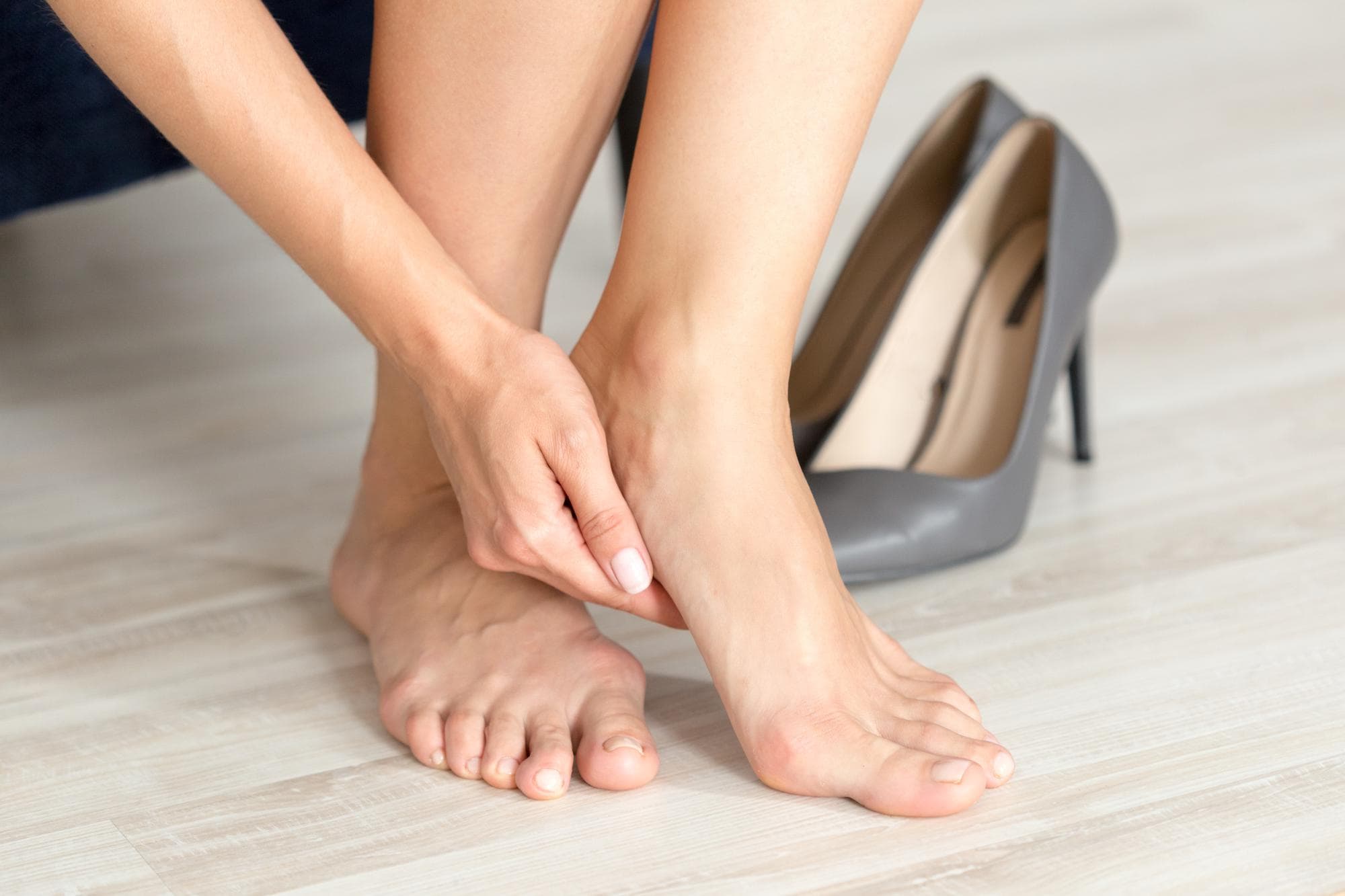Oct 06, 2025
Tailor's Bunion: Understanding, Treating, and Preventing This Foot Condition

THIS WEBSITE DOES NOT PROVIDE MEDICAL ADVICE. The content included on this website is for informational and educational purposes only. Always consult with your healthcare provider regarding any medical condition and before starting any healthcare or medication regimen.
A tailor's bunion, also known as a bunionette, is a bony bump that forms at the base of the pinkie toe, where it meets the foot. This condition is similar to a bunion, which occurs at the base of the big toe, but affects the outside edge of the foot. The term "tailor's bunion" originates from the traditional cross-legged sitting position of tailors, which placed pressure on the outside of their feet, leading to the development of these bony prominences.
Symptoms of Tailor's Bunion
The primary symptom of a tailor's bunion is a noticeable bump at the base of the pinkie toe. Other symptoms may include:
Pain or tenderness around the affected area, especially when wearing tight or narrow shoes.
Redness and swelling over the bump.
Callus formation due to friction between the bump and footwear.
In severe cases, the little toe may become misaligned, turning inward toward the other toes.
Causes and Risk Factors
Tailor's bunions develop due to prolonged pressure on the fifth metatarsophalangeal (MTP) joint. Common causes and risk factors include:
Footwear Choices: Wearing shoes with a narrow toe box or high heels can compress the toes, increasing pressure on the pinkie toe joint.
Foot Structure: Inherited foot structures, such as a prominent fifth metatarsal bone or a tendency to roll the foot outward, can predispose individuals to bunionettes.
Arthritis: Conditions like rheumatoid arthritis can cause inflammation and changes in foot structure, contributing to bunion formation.
Occupational or Lifestyle Factors: Activities that involve prolonged standing or specific sitting positions that exert pressure on the outside of the foot can lead to the development of tailor's bunions.
Diagnosis
A healthcare provider can diagnose a tailor's bunion through a physical examination of the foot. They may also recommend an X-ray to assess the alignment of the bones and the severity of the deformity.
Treatment Options
Treatment aims to relieve pressure on the affected area and alleviate symptoms. Options include:
Footwear Modifications: Switching to shoes with a wide, deep toe box can reduce pressure on the pinkie toe. Avoiding high heels and opting for supportive footwear can also help.
Orthotic Devices: Custom or over-the-counter shoe inserts can provide support and redistribute pressure away from the bunionette.
Padding and Taping: Applying non-medicated bunion pads can cushion the area, and taping can help maintain proper toe alignment.
Medications: Over-the-counter nonsteroidal anti-inflammatory drugs (NSAIDs) can reduce pain and inflammation. Topical NSAIDs may also be beneficial.
Icing: Applying ice packs to the affected area can help reduce swelling and alleviate pain.
Corticosteroid Injections: In cases of severe inflammation, a healthcare provider may administer corticosteroid injections to reduce swelling.
If conservative treatments are ineffective and the bunionette causes significant pain or interferes with daily activities, surgical intervention may be considered. Surgery typically involves removing the bony prominence and realigning the affected toe.
Prevention
To prevent the development or progression of a tailor's bunion:
Choose footwear that provides ample space for the toes and offers proper support.
Avoid high heels and shoes with narrow toe boxes.
Consider using orthotic devices if you have structural foot issues.
Maintain a healthy weight to reduce pressure on the feet.
Perform foot exercises to strengthen the muscles and improve flexibility.
Conclusion
A tailor's bunion can cause discomfort and affect daily activities, but with appropriate management and preventive measures, symptoms can be alleviated. It's essential to consult with a healthcare provider or podiatrist for an accurate diagnosis and personalized treatment plan. Early intervention can prevent the condition from worsening and improve the quality of life.
Frequently Asked Questions (FAQs)
What is a tailor's bunion?
A tailor's bunion, or bunionette, is a bony bump that forms at the base of the pinkie toe, where it meets the foot.
What causes a tailor's bunion?
Tailor's bunions are caused by prolonged pressure on the fifth MTP joint, often due to tight footwear, inherited foot structures, arthritis, or certain occupational or lifestyle factors.
How is a tailor's bunion treated?
Treatment options include footwear modifications, orthotic devices, padding, medications, icing, and in severe cases, surgery.
Can a tailor's bunion be prevented?
Yes, by wearing properly fitting shoes, avoiding high heels, using orthotics if needed, maintaining a healthy weight, and performing foot exercises.
When should I see a healthcare provider for a tailor's bunion?
If you experience persistent pain, swelling, or difficulty walking, consult a healthcare provider for evaluation and treatment options.
